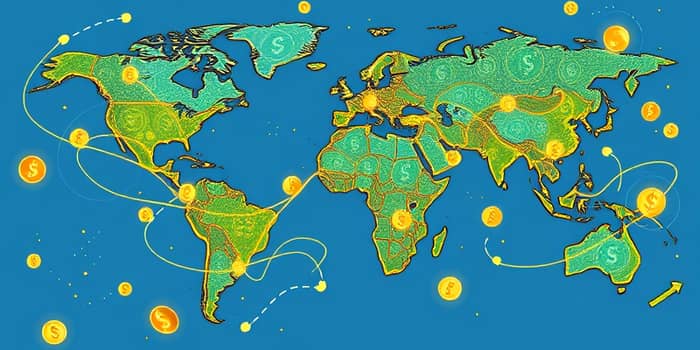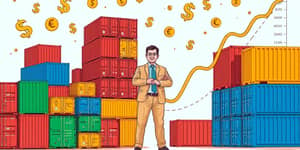
In today’s interconnected world, understanding currency dynamics is more than an academic exercise—it’s an essential skill for businesses, investors, and individuals alike.
Whether you are planning a trip abroad, managing an international portfolio, or simply curious about what moves the foreign exchange market, gaining clarity on how exchange rates are determined can empower you.
At its core, currency serves as medium of exchange and store value, facilitating trade between parties without the inefficiencies of barter.
From its early evolution—from commodity coins to sophisticated digital tokens—currency has continually adapted to meet the needs of commerce and society.
An exchange rate represents the price at which one currency can be converted into another, reflecting a delicate balance of supply and demand across global markets.
Exchange rates come in two primary forms:
Recognizing whether you’re working with a nominal or real rate is crucial for accurate comparison of purchasing power across borders.
The value of a currency rarely moves in isolation. It is influenced by a tapestry of economic conditions and policy choices that ripple across markets.
Consider the following major factors:
By keeping a close eye on these variables, you equip yourself with insight into future currency movements and potential market shifts.
The US dollar’s trajectory against the euro in the first half of 2025 illustrates how macroeconomic forces and policy actions converge.
Below is a snapshot of historical rates, tracking the dollar’s evolving strength:
This decline in the USD/EUR rate highlights persistent trends in economic growth differentials, alongside diverging monetary policies in the US and eurozone.
For example, while US growth remained robust and interest rates held firm, eurozone inflation pressures prompted cautious central bank moves, impacting currency flows.
When a nation sets its currency’s course, it chooses a regime that aligns with its economic priorities.
Fixed systems peg a currency’s value to a benchmark, providing stability in trade and investment but sacrificing autonomy over monetary policy.
In contrast, market-determined flexible exchange rate regime allows a currency to respond dynamically to real-time market forces, offering protection against external shocks and greater policy flexibility.
The ideal regime depends on each country’s appetite for inflation control, trade balance objectives, and tolerance for volatility.
impacts interest rates and currency strength underscores how central bank decisions resonate beyond domestic borders.
When a central bank raises rates, it often strengthens its currency by attracting capital seeking higher returns.
Similarly, trade policies such as tariffs can redirect export and import flows, placing pressure on exchange rates to adjust to new trade balances.
A nation’s economic growth relative to its trading partners is another potent force, as robust growth can signal a stronger currency outlook.
Arming yourself with the right instruments can transform complex data into actionable insights.
Here are essential resources to include in your toolkit:
Combining these resources with an analytical framework enables you to craft a well-rounded strategy for savvy decision-making in currency markets.
Imagine an export-oriented company in a small open economy. Fluctuations in the national currency’s value can dramatically influence profit margins when invoices are denominated in foreign currencies.
By hedging exposure through forward contracts and monitoring central bank communications, the company can mitigate risks and preserve margins even when markets turn volatile.
This real-world example underscores the value of continuous monitoring of economic indicators and policies, allowing businesses to navigate uncertainty with confidence.
As technology reshapes how we transact, digital currencies and blockchain-based payment systems are poised to redefine the concept of money itself.
Central bank digital currencies (CBDCs) could introduce new exchange rate dynamics, blending traditional monetary policy tools with cutting-edge technologies.
Moreover, geopolitical shifts, evolving trade alliances, and climate-related risks will weave fresh threads into the tapestry of currency markets.
Staying prepared means cultivating curiosity, honing analytical skills, and embracing the fact that currency landscapes are ever-evolving puzzles awaiting a thoughtful solution.
Understanding exchange rates is more than memorizing numbers; it’s about interpreting the story they tell about economies, policies, and human behavior.
By mastering fundamentals, leveraging robust tools, and maintaining an observant mindset, you position yourself to anticipate shifts and seize opportunities.
In the currents of global finance, knowledge is your compass. Equip yourself with the insights shared here, and navigate the world of currency with clarity, precision, and confidence.
References













